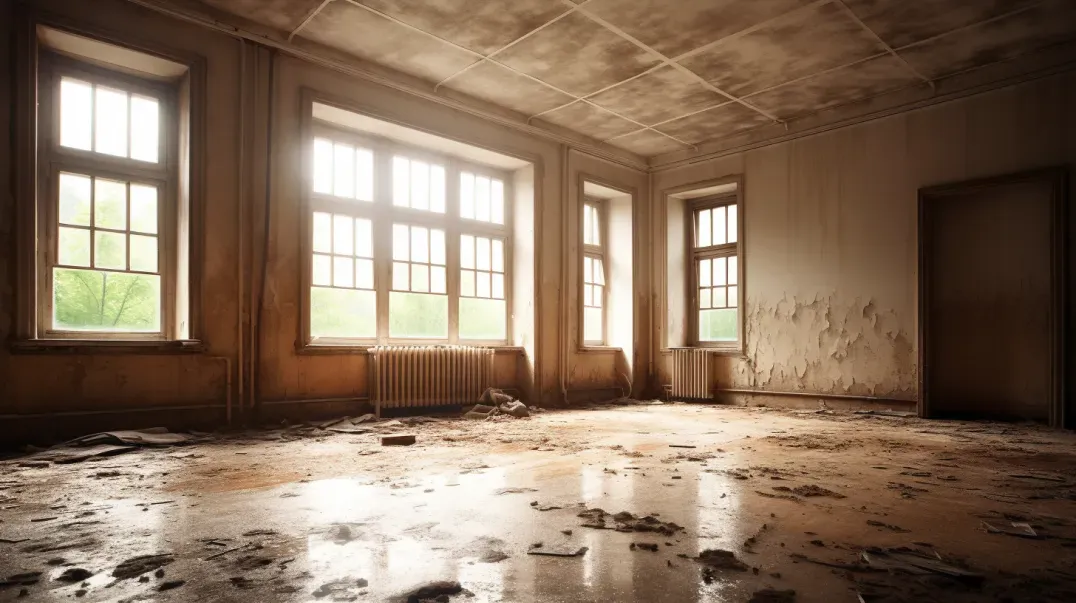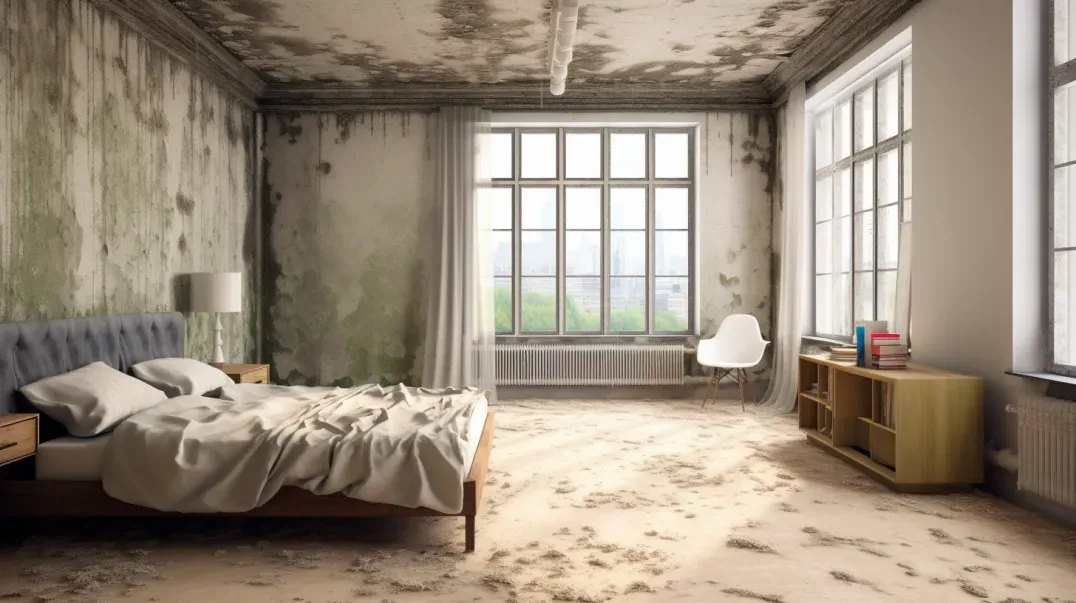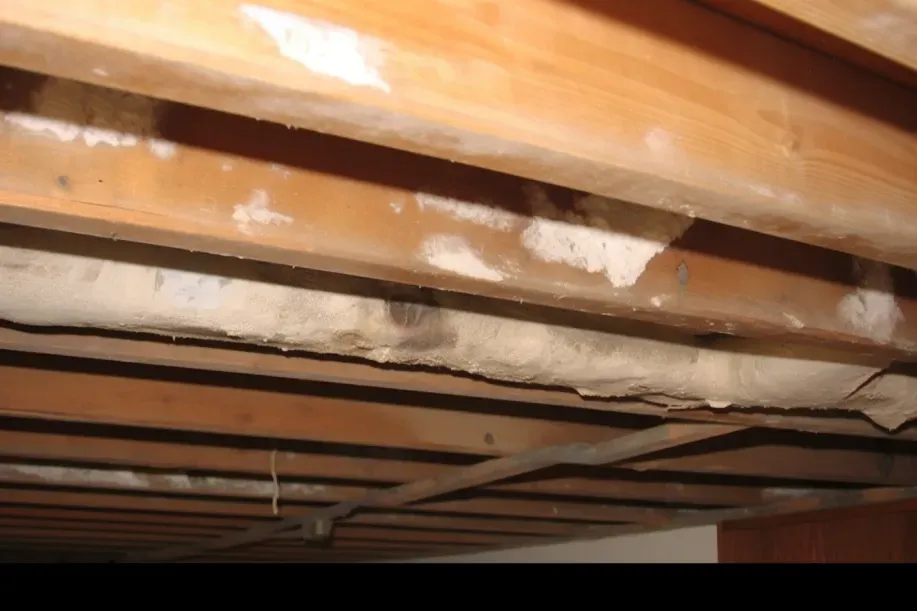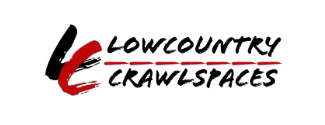Mold Color Variations and Identification
Welcome to our comprehensive exploration of mold, a ubiquitous yet often misunderstood presence in our environments. Mold, a form of fungi, is not just a common issue in homes, workplaces, and natural settings, but also a subject of significant importance for health and safety. This blog delves into the intricate world of mold, shedding light on its various color manifestations and the critical role they play in identification and treatment.
Mold's presence is often perceived negatively, primarily due to its association with health issues and property damage. However, understanding the nuances of mold is crucial for effective management and remediation. One of the most striking and informative aspects of mold is its color variation. From the ominous black mold often cited in health warnings to the less conspicuous white or green varieties, each color carries specific implications regarding the mold's nature, potential health risks, and the appropriate strategies for addressing it.
In this blog, we aim to equip you with the knowledge to identify different types of mold through their color variations. This understanding is not just academically interesting but practically essential. Identifying the type of mold can guide you in determining the urgency and method of treatment, be it a simple cleaning routine or a call to professional mold remediation services.
Join us as we embark on this informative journey, unraveling the mysteries of mold colors, and arming you with the knowledge to create safer, healthier living and working environments.
The Basics of Mold and Its Growth
Mold is a common yet often misunderstood element in our environments. It's crucial to understand the basics of mold - what it is, how it grows, and where it thrives - to effectively manage and mitigate its presence in our homes and workplaces.
What is Mold?
Mold is a type of fungus that plays a vital role in nature by breaking down dead organic matter. However, when it grows unchecked in indoor environments, it can pose health risks and damage structures. Mold reproduces through tiny spores that float through the air, invisible to the naked eye. These spores can start growing on surfaces when they find the right conditions - moisture, warmth, and a food source like wood, paper, or fabric.
Mold growth is commonly found in damp, humid areas such as basements, bathrooms, and kitchens. It can grow on a variety of surfaces, including walls, ceilings, carpets, and furniture. Understanding these common habitats is essential for preventing and controlling mold growth in our living spaces.
Factors Influencing Mold Growth and Color
The color and rate of mold growth are influenced by various environmental factors. The most significant of these is moisture. Mold cannot grow without moisture, so leaky pipes, flooding, and high humidity levels are common culprits of mold infestations. Temperature also plays a crucial role; mold grows best in warm environments, which is why it's often found in heating and cooling systems.
The color of mold can vary widely, from black and green to white and orange, and each color can provide clues about the type of mold and its potential health risks. For example, black mold is often associated with severe health problems, while green or white molds are generally less harmful. However, any visible mold, regardless of its color, should be a cause for concern and addressed promptly.
In this section of the blog, we will explore these factors in detail, providing you with the knowledge to identify potential mold problems and take proactive steps to prevent mold growth in your environment.
Common Mold Colors and Their Identification
Mold comes in a variety of colors, each signifying different species and potential health implications. Understanding these colors is crucial for identifying the type of mold and determining the appropriate response.
Black Mold (Stachybotrys)
Black mold, scientifically known as Stachybotrys, is one of the most notorious molds due to its potential health risks. It typically appears as a dark black or sometimes greenish-black slimy substance. Black mold thrives in environments that have been subject to water damage or are consistently damp, such as around leaky pipes or in flood-damaged buildings.
Health implications associated with black mold exposure can be severe, especially for individuals with respiratory issues or weakened immune systems. Symptoms may include chronic coughing, sneezing, irritation to the eyes and skin, and in more severe cases, chronic fatigue and persistent headaches.
Green Mold (Aspergillus, Penicillium)
Green molds, including Aspergillus and Penicillium, are common in many environments. They usually appear as powdery or fuzzy textures and can range in color from blue-green to gray-green. These molds are often found on food, walls, insulation, and in air conditioning systems.
While some species of green mold are relatively harmless, others can pose health risks, especially to individuals with allergies or asthma. Exposure to these molds can lead to respiratory issues, allergic reactions, and in rare cases, more serious infections.
White Mold (Efflorescence)
White mold, often mistaken for efflorescence (a crystalline deposit of salts), can be tricky to identify. It usually presents as a powdery, white substance and is commonly found on wooden surfaces, drywall, and carpeting. Unlike efflorescence, which is a salt deposit caused by water seepage and is not harmful, white mold can pose health risks similar to other types of mold.
Distinguishing white mold from efflorescence is important for proper treatment. White mold should be addressed promptly to prevent its spread and potential health risks, which can include allergic reactions and respiratory issues.
Other Colors of Mold
Mold is not limited to the common black, green, and white varieties. Less common colors include orange, yellow, and blue molds, which can be found in various environments. For example, orange mold is often seen in damp wood or fabric, while yellow mold might be found on wooden surfaces, wallpaper, and in damp areas. Blue mold, though less common, can appear on food and walls.
Each color variation of mold has its own characteristics and potential health implications. Understanding these can help in early identification and effective remediation.
Health Implications of Different Mold Colors
Mold, in its various forms and colors, can have a range of effects on health. Understanding these implications is crucial for safeguarding our well-being in environments where mold is present.
Toxic vs. Allergenic Molds
Molds can be broadly categorized into toxic and allergenic types, each posing different health risks.
Toxic Molds: These molds produce mycotoxins, toxic substances that can lead to serious health problems. Black mold (Stachybotrys chartarum) is a well-known toxic mold. Exposure to mycotoxins can cause symptoms ranging from respiratory issues to neurological problems. Long-term exposure can be particularly harmful, leading to more severe health conditions.
Allergenic Molds: These are more common and typically less dangerous than toxic molds. They can trigger allergic reactions and respiratory problems, especially in individuals with mold allergies or asthma. Symptoms can include sneezing, coughing, itchy eyes, and skin rashes. Common allergenic molds include certain species of Aspergillus and Penicillium, which often appear as green or white molds.
Symptoms of Mold Exposure
Exposure to different mold colors can lead to a variety of health symptoms, depending on the type of mold and the individual's sensitivity. Common symptoms include:
- Respiratory Issues: Coughing, wheezing, and difficulty breathing are common in individuals exposed to mold. Those with pre-existing respiratory conditions, like asthma, may experience more severe symptoms.
- Allergic Reactions: Mold exposure can trigger allergic responses, such as sneezing, runny nose, red eyes, and skin rash. These symptoms are more common with exposure to allergenic molds but can occur with any mold type.
- Neurological Symptoms: Exposure to toxic molds can lead to neurological symptoms like headaches, dizziness, and memory loss. These symptoms are more serious and often associated with prolonged exposure to molds that produce mycotoxins.
- Immune System Responses: In some cases, mold exposure can lead to immune system suppression or stimulation, leading to various health issues, particularly in individuals with weakened immune systems.
It's important to note that the severity of symptoms can vary greatly among individuals. Some may experience mild allergic reactions, while others might suffer from more severe health issues, especially with prolonged or high-level exposure.
Inspecting for Mold: What to Look For
Mold inspection is a crucial step in maintaining a healthy living or working environment. Knowing what to look for and when to seek professional help can make a significant difference in addressing mold issues effectively.
Visual Inspection Tips
A thorough visual inspection is the first step in identifying potential mold problems. Here are some guidelines to help you conduct an effective mold inspection:
- Look for Visible Signs of Mold: Mold often appears as a fuzzy or slimy growth on surfaces and can vary in color, including black, green, white, or even orange and purple.
- Check Common Mold Hotspots: Inspect areas prone to moisture, such as bathrooms, kitchens, basements, around windows, and under sinks. Don't forget to check hidden areas like behind wallpapers, under carpets, and inside ventilation systems.
- Notice Water Damage and Moisture Issues: Mold thrives in moist environments. Look for signs of water damage, leaks, condensation, or flooding, as these are potential breeding grounds for mold.
- Smell for Musty Odors: Sometimes mold is not visible but can be detected by a musty, earthy smell, especially in damp, closed-off spaces.
- Use a Flashlight: Shine a light at different angles on suspected surfaces to reveal subtle mold growth that might not be visible under normal lighting conditions.
- Document Your Findings: Take notes or photographs of any suspected mold growth. This can be helpful for professional assessment if needed.
When to Use Professional Testing
While a visual inspection can identify apparent mold issues, there are circumstances where professional mold testing is recommended:
- Health Symptoms: If occupants are experiencing unexplained allergies or respiratory problems, professional testing can determine if mold is the culprit.
- After Water Damage: If your property has recently experienced significant water damage, especially if areas have remained wet for more than 24 to 48 hours, professional testing can assess the extent of mold growth.
- Buying or Selling a Property: Mold inspections are crucial during real estate transactions to ensure the property is free of mold problems.
- To Identify Hidden Mold: Professional testers can identify mold growth in hidden areas using specialized equipment and techniques.
- For Accurate Identification and Remediation Plan: Professional testing can accurately identify the type of mold and its concentration, which is essential for developing an effective remediation plan.
Remember, while visual inspections are helpful for initial assessments, they cannot replace the expertise and thoroughness of professional mold testing, especially in cases of health concerns or extensive mold growth.
Misconceptions About Mold Colors
Mold, an omnipresent part of our environment, is often misunderstood, especially when it comes to its color. This section aims to debunk common myths and clarify misconceptions about mold colors, particularly regarding toxicity and identification.
Color and Mold Toxicity
One of the most prevalent misconceptions about mold is that its color directly indicates its level of toxicity. This misunderstanding can lead to misinformed decisions about mold treatment and health risks. Here are key points to clarify this misconception:
- No Direct Correlation: There is no direct correlation between mold color and its toxicity. While certain toxic molds, like Stachybotrys chartarum (often referred to as "black mold"), are indeed black, not all black molds are toxic. Conversely, molds of other colors can also produce toxins.
- Variability of Toxin Production: The production of mycotoxins (toxic substances produced by some molds) depends on various factors like humidity, temperature, and the material the mold is growing on. Therefore, the presence of toxins cannot be determined solely based on color.
- Health Risks Are Varied: Different molds, regardless of their color, can pose various health risks, from allergic reactions to more severe health issues. It's important to address any mold growth, irrespective of its color.
The Limitations of Visual Identification
Relying solely on color for mold identification is not only misleading but can also lead to improper handling of mold issues. Here's why visual identification has its limitations:
- Diverse Mold Species: There are thousands of mold species, many of which can appear similar in color. For instance, both harmless and harmful molds can be black, green, or white.
- Stages of Growth: The color of mold can change over different stages of its growth, making identification based on color unreliable.
- Surface Effects: The appearance of mold can be influenced by the surface it's growing on, leading to variations in color that do not necessarily indicate a specific type of mold.
- Need for Expert Analysis: Accurate identification of mold types often requires laboratory analysis. Professionals can test mold samples to determine the exact species and potential health risks.
In conclusion, while color can provide initial clues about mold, it should not be used as the sole criterion for determining the type of mold or its potential health risks. Professional assessment and testing are crucial for accurate identification and effective remediation.
FAQs
Contact Lowcountry Crawlspaces Today!
Lowcountry Crawlspaces will do everything we can to ensure your experience with us is excellent.
Request A FREE Estimate
CHECKOUT RECENT POST



Schedule Your FREE Crawl Space Evaluation Today
There Is No Crawl Space Job We Can’t Fix!




